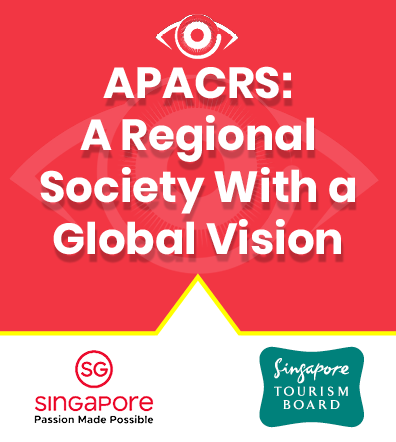Eyeworld Weekly Update |
Volume 21, Number 37 |
14 October 2016 |
- GYC-500 granted 510K clearance
- Lucentis granted priority review for myopic CNV
- Nicox receives CRL on AC-170
- RetinoStat shows favorable safety profile in published study
- Correction
GYC-500 granted 510K clearance
The Food and Drug Administration granted 510K clearance to Nidek (Gamagori, Japan) for its GYC-500 Vixi Green Scan Laser Photocoagulator/GYC-500 Green Laser Photocoagulator, the company said in a press release. The GYC-500 Vixi/GYC-500 is a solid state green laser that "achieves stable treatment outcomes for multiple applications including, retinal photocoagulation, trabeculoplasty and iridotomy," Nidek said.
Lucentis granted priority review for myopic CNV
The Food and Drug Administration granted priority review to Lucentis (ranibizumab, Genentech, South San Francisco) for the treatment of myopic choroidal neovascularization (mCNV), a complication of severe near-sightedness that can lead to blindness. The supplemental Biologics License Application is based on results from the Phase 3 RADIANCE study that demonstrated treatment with Lucentis provided superior visual acuity gains in people with mCNV compared to verteporfin photodynamic therapy, the only treatment currently approved by the FDA for mCNV. The RADIANCE study is a 12-month, randomized, double-masked, multicenter, active-controlled study comparing the efficacy and safety of Lucentis (0.5 mg) versus verteporfin photodynamic therapy (vPDT) in 277 patients with visual impairment due to myopic choroidal neovascularization. After 3 months, the Lucentis groups 1 (n=106; treatment with Lucentis on study day 1, as well as 1 month later, and as needed thereafter) and 2 (n=116; treatment with Lucentis on study day 1 and as needed thereafter) gained 10.5 and 10.6 letters in visual acuity, respectively, demonstrating a statistically significant improvement over the vPDT group 3 (n=55), which gained 2.2 letters. Patients in group 3 were allowed to receive Lucentis after month 3 and were followed until month 12. If approved, Lucentis would be the first FDA-approved anti-vascular endothelial growth factor therapy to treat mCNV.
Nicox receives CRL on AC-170
The Food and Drug Administration issued a complete response letter (CRL) to Nicox (Sophia Antipolis, France) for AC-170, the company's proprietary cetirizine eye drop formulation for the treatment of ocular itching associated with allergic conjunctivitis. The FDA's stated reason for the CRL pertains solely to a Good Manufacturing Practice inspection at a third party facility producing the active pharmaceutical ingredient cetirizine and supplying it to the manufacturer of the finished product. The safety and efficacy data submitted by Nicox in the AC-170 New Drug Application have not resulted in the FDA requesting any further clinical or non-clinical testing for the approval of the AC-170 NDA.
RetinoStat shows favorable safety profile in published study
The RetinoStat (OXB-201) Phase 1 study in patients with advanced wet age-related macular degeneration (AMD) found a favorable safety profile and led to robust, reproducible sustained expression of endostatin and angiostatin in the eye, developer Oxford BioMedica (Oxford, U.K.) said in a press release. The Phase 1 study was primarily designed to evaluate the safety and tolerability of RetinoStat for the treatment of severe wet AMD following a single subretinal injection and represented the first time a lentiviral-based vector had been administered to the human eye. Twenty-one subjects with highly fibrotic retinas who were refractory to anti-VEGF therapy following a prior responsive history were treated. According to the company, therapeutic gene expression, measured in these patients as a secondary study endpoint, was found to be dose-dependent and maintained at the last measurement (2.5 years in eight subjects and >4 years in two subjects).
Correction
Last week's EyeWorld Weekly Update should have stated: The Luminate (ALG-1001, Allegro Ophthalmics, San Juan Capistrano, California) PACIFIC study results are anticipated next year for posterior vitreous detachment. The DEL MAR study is evaluating Luminate for diabetic macular edema. The editors regret the incorrect information.
RESEARCH BRIEFS
 Licensed Publications |
Licensed through ASCRS American Society of Cataract and Refractive Surgery, 4000 Legato Road, Suite 700, Fairfax, VA 22033-4003, USA.
All rights reserved. The ideas and opinions expressed in EyeWorld Asia-Pacific Weekly News do not necessarily reflect those of the ASCRS�ASOA or APACRS. Mention of products or services does not constitute an endorsement by the ASCRS�ASOA or APACRS. Copyright 2008, EyeWorld News Service, a division of ASCRS Media. |



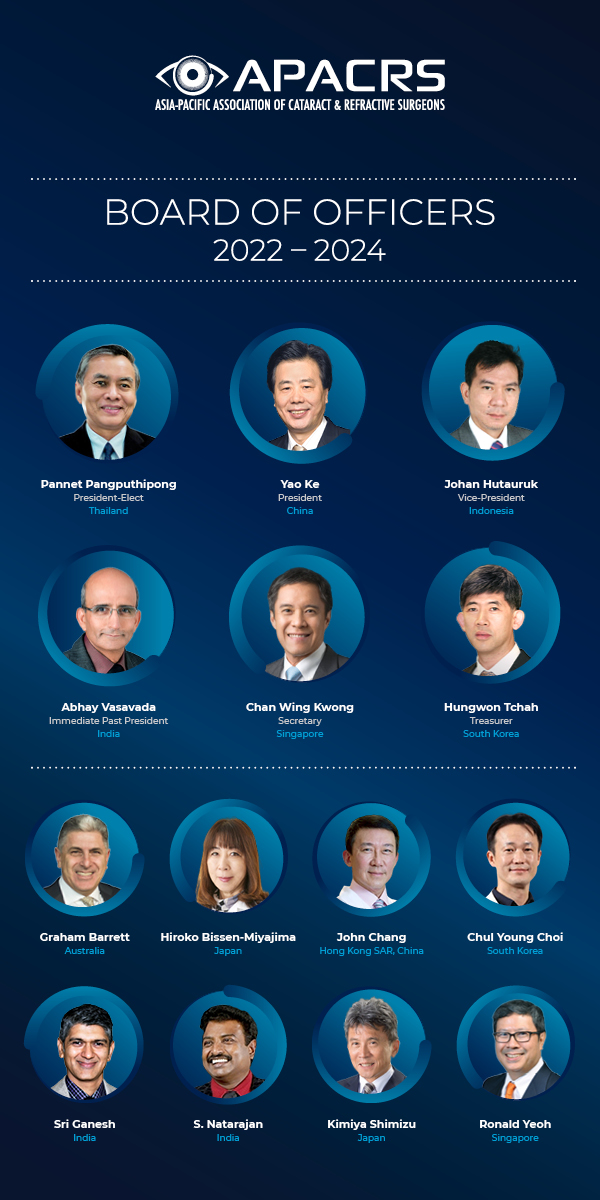
 EyeSustain Update
EyeSustain Update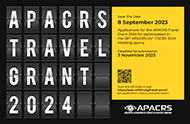 2024 APACRS TRAVEL GRANT
2024 APACRS TRAVEL GRANT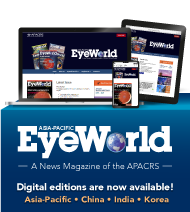 Digital EyeWorld
Digital EyeWorld VOL. 39 (2023), ISSUE 3
VOL. 39 (2023), ISSUE 3  Membership Information
Membership Information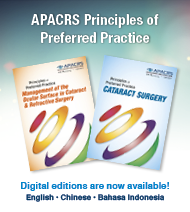 APACRS Principles of Preferred Practice
APACRS Principles of Preferred Practice